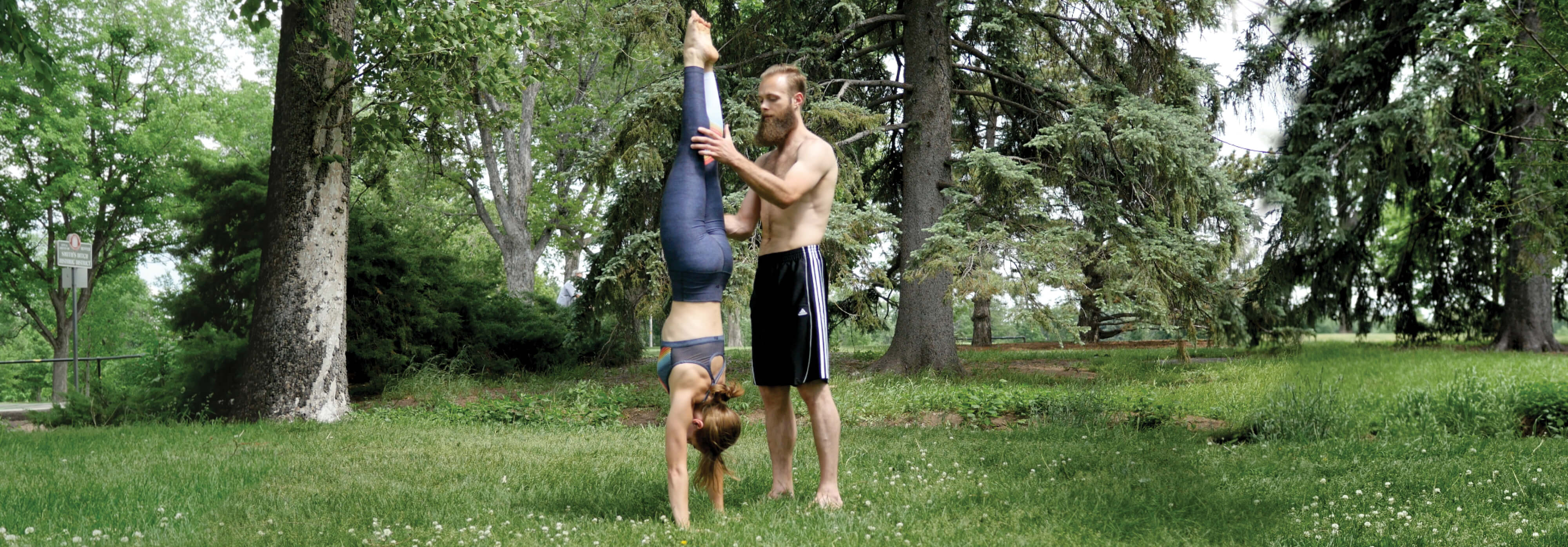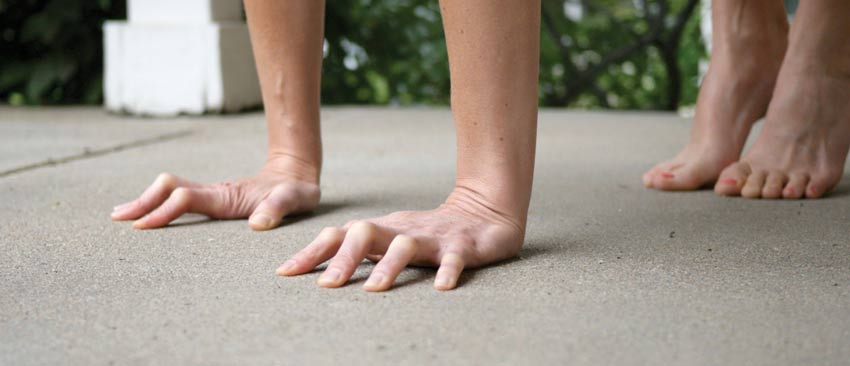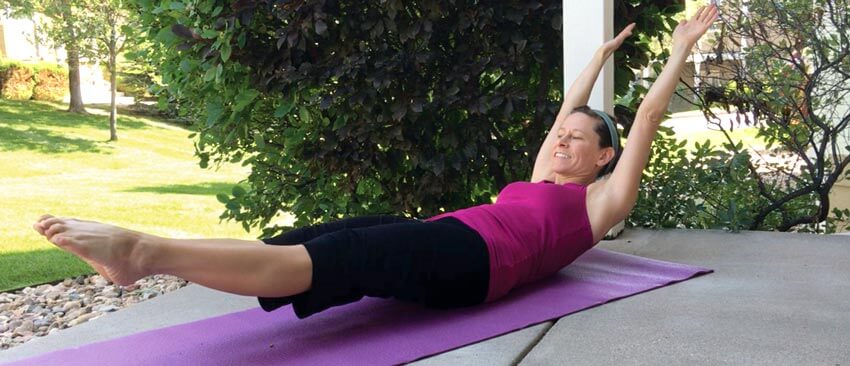Handstands for Beginners - 3 Cues for Success

Balancing on your hands in a handstand is tough and often feels very peculiar, especially in the beginning of your handstand journey. But to put all the hard work of handstand training into perspective think about how long it took you to learn to walk! It is a very similar process to do the same on your hands, although the years of adulthood and imbalances make it even more challenging than it was when we were fresh and young.
In early stages of development, infants progress from crawling to standing while holding onto something to walking, which often resembles something more like a drunken sailor. Your handstand will be the same, progressing in the same wobbly baby steps until you can balance without thinking. For adults approaching Gymnastics Strength Training™ for the first time, the journey to mastering the freestanding handstand always end up looking the same.
First, you need to build the strength and stability in your shoulders, then you will need some assistance (the wall), and after lots of falling and re-balancing, you will eventually be able to hold yourself inverted in a static handstand. Along the way, there are many helpful tips that can accelerate your progress by honing your focus on what needs to happen while balancing. So, where do you begin? With the basics, of course. Here are three great handstand cues that beginners can use today to improve their practice.
1. Grip the floor.
A common mistake that novice trainees make when attempting handstands for the first time is that they simply do not grip the floor enough while upside-down. When your hands are the only part of your body touching the ground, you need to maximize their ability to make minute adjustments to your balance throughout your hold. To understand this, take your shoes off and balance on one foot. You will quickly realize that your toes, feet, ankles, and calves perform countless tiny little muscular contractions in order to keep you from falling over. This will also help teach you that balancing a static freestanding handstand is actually the result of simply honing these adjustments in to become as small and infrequent as possible.

So the cue beginners need to internalize is "Grip the floor." Spread your fingers as wide as possible, and pretend like you are trying to palm a basketball. Now you do not want to maximally squeeze your hand to the point when you are over-gripping and causing wrist or elbow tendonitis, but rather you want to have an active grip. When upside-down in a handstand, if you begin to slightly lose your balance forwards, then you can apply a bit more pressure into the ground through your fingers in order to re-adjust. Conversely, if losing a bit of balance backward, then you can try to press into the heel of your palm. These adjustments need to be slight, however, and if you still fall over, then perhaps you need to look further up the body.
2. Shrug your shoulders.
The second cue we will discuss here is "Shrug your shoulders." Often when kicking up into a handstand or practicing chest-to-wall, adult beginners will not place enough focus on what their shoulders are doing. Let's return to the analogy of standing on your feet: here, your glutes perform the work of keeping your hips open and maintaining your upright posture. While standing on your hands, then, the focus needs to be shrugging your shoulders so that your traps and other musculature in your upper back engages to help support your body weight.
More specifically, while in a handstand you should be trying to both protract and elevate your scapula. By doing so, you will be creating a solid, stable base of muscle that will "lock" your shoulders into place, thus keeping you from falling while upside-down. Protraction, or spreading your shoulder blades across your back, will help prevent your ribs from sticking out in the front, something that improves your body alignment as well. Elevation, or shrugging your shoulders up into your ears, provides an active and engaged foundation for your bodyweight while inverted. If after gripping the floor and focusing on your shoulders you still have issues balancing, then read on for our last tip.
3. Squeeze Your Butt
The third and last handstand cue for beginners that we will discuss is "squeeze your butt." While this is a bit over-simplified, it often achieves the correct result: the athlete engages their glutes, which helps shift them into a straighter body line. This then prevents an arched back, which can disengage the core and result in a loss of balance in the handstand.
There is a reason gymnastics coaches all over the world strongly emphasize a straight-line handstand: it is the most efficient position to balance. So if you find yourself falling due to a banana back, work on your glute engagement as you balance.

Getting into a handstand as an adult may be daunting, but is a skill (and awesome party trick) that is well worth the efforts. Not only will you be developing a solid line, but the GymnasticBodies Handstand Courses will help keep your wrists, shoulders and full body healthy, strong and mobile enough to take on all of the adventures, or life challenges, ahead.

